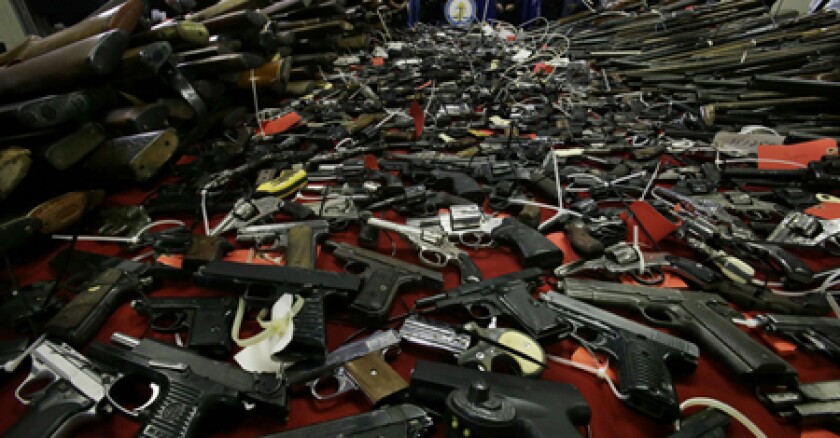Three decades ago local governments launched gun buyback programs in a bid to cut crime. It was a simple proposition: Sell your gun to the city for cash, no questions asked. The events became so prevalent across the country that public health researchers decided to test whether they actually reduced crime. Their conclusion? Not really.
Yet in the aftermath of mass shootings in Aurora, Colo., and Newtown, Conn., buybacks have made a comeback. Baltimore, Chicago, Cincinnati, Los Angeles, Newark, Seattle and dozens of other cities have announced plans to purchase residents’ firearms in bulk.
Gun rights advocates say buybacks don’t serve any real purpose. John Josselyn of the Associated Gun Clubs of Baltimore called a December buyback in his city “symbolism over substance” and “a publicity stunt.” Josselyn turned in a nonworking gun and noticed many other people doing the same, he says. “None of these would be attractive to a criminal.”
Read the March issue of Governing magazine.
Data seem to back him up. Studies in Seattle and Sacramento in 1994 and 1998 suggested that the type of people selling their firearms -- relatively few young men, for instance -- didn’t resemble the general gun-owning population and weren’t likely to commit gun crimes. In Seattle, there appeared to be no statistically significant change in gun-related homicides after its gun buyback. A 2002 study in Milwaukee found that handguns sold back to local police didn’t fit the profile of handguns used in homicides. Buybacks, the studies seemed to say, don’t work.But it may be time for a reassessment. Garen Wintemute, an author of the studies in Milwaukee and Sacramento and the director of an injury-prevention center at the University of California, Davis, now says these programs deserve a re-examination.
In the past, police would often accept any gun, even ones that no longer worked. Now many local programs tailor the rules to attract targeted guns. For example, a December buyback in Camden County, N.J., paid residents on a sliding scale from $50 for a gun that couldn’t fire to $250 for a high-powered weapon. Police set a state buyback record, collecting 1,137 guns, including five automatic assault weapons.
The number of firearms already in circulation in the United States -- an estimated 300 million -- dwarfs even the most successful public buyback figures. Nonetheless, Wintemute says he regrets that he and his peers wrote off buybacks a decade ago. “They have intangible value that we have really been underestimating,” he says. “They never will reduce rates of violent crime, but that may have been the wrong parameter to look at.”
As part of a larger discussion about public safety, Wintemute says, buybacks may play an important role in mobilizing a community to examine gun control. Some 800 mayors have joined Mayors Against Illegal Guns, which pushes for national gun-control proposals. Chicago Mayor Rahm Emanuel, a proponent of buybacks, wants city leaders across the country to divest municipal pension funds from assault weapon manufacturers.
“Our concern was that people would do a buyback and then move on and think they had taken care of the problem,” Wintemute says. “But people are not sitting back and waiting for Washington to do something.”









